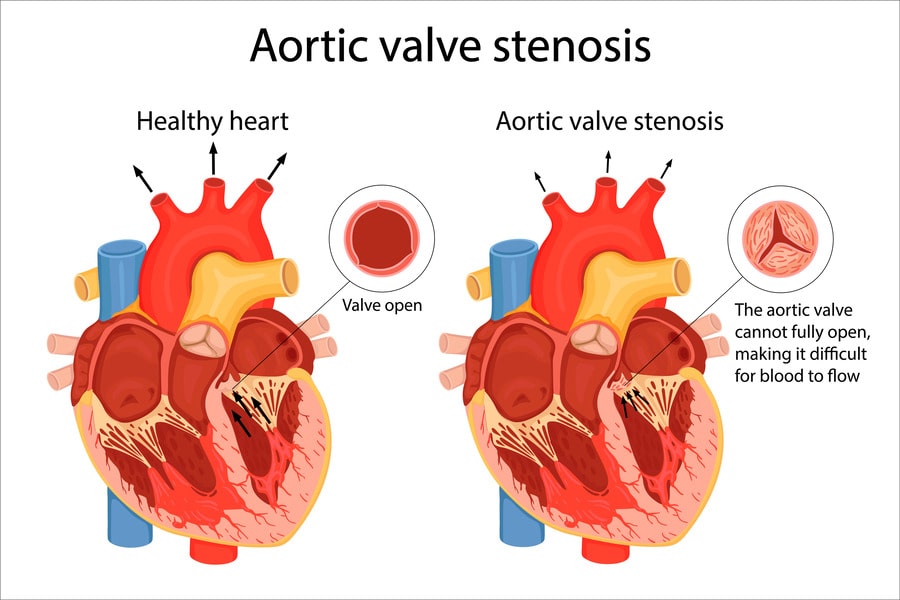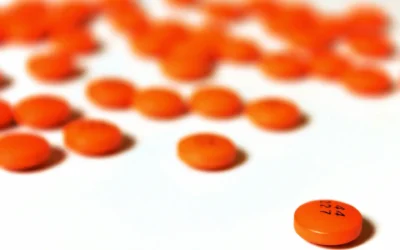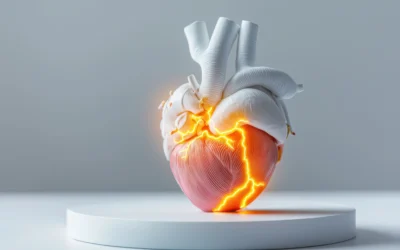The heart, a symbol of life and vitality, depends on a series of intricate components working in harmony to function efficiently. One such crucial component is the aortic valve. When this valve isn’t functioning correctly due to aortic valve stenosis, the repercussions can be severe. This article provides a comprehensive view of this condition, emphasizing its importance in heart health.
What is Aortic Valve Stenosis?
is a cardiac condition where the heart’s aortic valve narrows. This narrowing hinders the valve’s ability to open fully, reducing blood flow from the heart’s main pumping chamber (left ventricle) to the aorta and subsequently to the rest of the body.
Overview
The aortic valve comprises three tightly fitting, triangular-shaped flaps of tissues called cusps. Stenosis occurs when these cusps become stiff, limiting their mobility. As the valve narrows, the amount of blood that can flow through decreases, making the heart work overtime to supply the body with the necessary oxygen-rich blood. Over time, this extra work can weaken the heart and lead to complications.
Symptoms
For many, aortic valve stenosis may remain symptomless for years. However, as the narrowing becomes more pronounced, symptoms can manifest, including:
- Fatigue or feeling tired quickly after minimal physical exertion.
- Shortness of breath, especially after activities or when lying down.
- Chest pain or tightness, often escalating during exercise.
- Heart palpitations: sensations of a rapid or fluttering heartbeat.
- Dizziness, lightheadedness, or even fainting.
- Noticeable heart murmurs.
Causes
Understanding the genesis of aortic valve stenosis is crucial. The primary causes include:
- Calcium Buildup on the Valve: With age, calcium deposits can accumulate on the valve cusps, making them stiff and reducing their flexibility.
- Congenital Heart Defect: Some are born with an aortic valve that has only two cusps (bicuspid) instead of three, making them prone to stenosis.
- Rheumatic Fever: A complication of strep throat, rheumatic fever can result in scar tissue forming on the aortic valve.
- Radiation Therapy: In some cases, radiation treatments to the chest can lead to valve issues.
Risk Factors
Several factors can enhance susceptibility to aortic valve stenosis:
- Age: The elderly are more prone due to wear and tear on the heart, particularly the aortic valve.
- History of Rheumatic Fever: Those who have had this condition are at risk.
- Congenital Heart Defects: Being born with abnormalities in the aortic valve can predispose one to stenosis.
- Chronic Kidney Disease: This condition can increase calcium deposits on the aortic valve.
- High Blood Pressure and High Cholesterol: These conditions can accelerate the rate of calcium buildup.
Prevention and Avoidance
While complete prevention of aortic valve stenosis isn’t always possible, certain proactive measures can reduce risk:
- Healthy Lifestyle: Maintain a balanced diet, exercise regularly, and manage weight. These steps not only benefit heart health but also overall well-being.
- Control Blood Pressure and Cholesterol: Regular check-ups and medications can help keep these in check.
- Promptly Address Strep Throat: Treating this can prevent rheumatic fever, a potential cause of stenosis.
- Regular Heart Check-ups: Especially for those at risk or with known heart conditions.
When to Seek Medical Attention
Timely intervention can make a world of difference. If one experiences symptoms indicative of aortic valve stenosis or has a known heart condition, regular medical evaluations are paramount. Symptoms like chest pain, extreme fatigue, or breathlessness, especially upon exertion, should be promptly addressed.
Additional Insights
Aortic valve stenosis, if left unchecked, can lead to heart failure, arrhythmias, and even sudden cardiac death. Early diagnosis is crucial. Regular echocardiograms, electrocardiograms, and in some cases, cardiac catheterization can provide valuable insights. Depending on the severity, treatment might range from simple observation and medications to surgical interventions like valve repair or replacement.
The journey through understanding aortic valve stenosis underscores the importance of proactive heart care. While the heart silently and relentlessly beats, ensuring every organ gets its vital supply of blood, it’s our responsibility to ensure it does so under the best conditions. Regular check-ups, awareness of symptoms, and a heart-healthy lifestyle can make all the difference in managing this silent but potentially severe condition.









